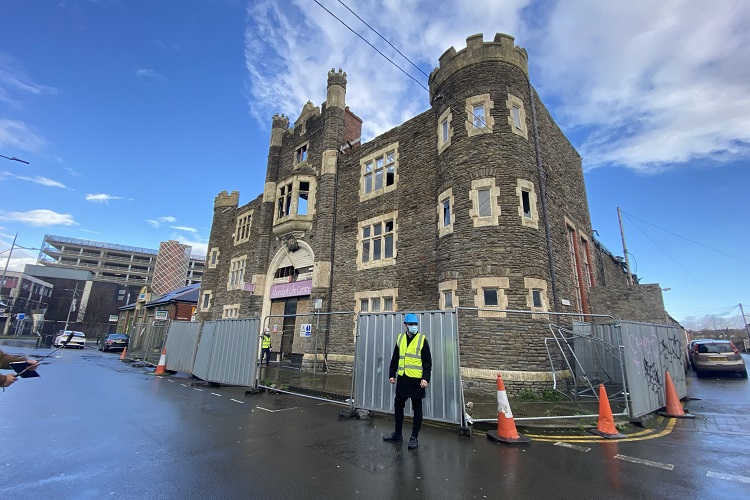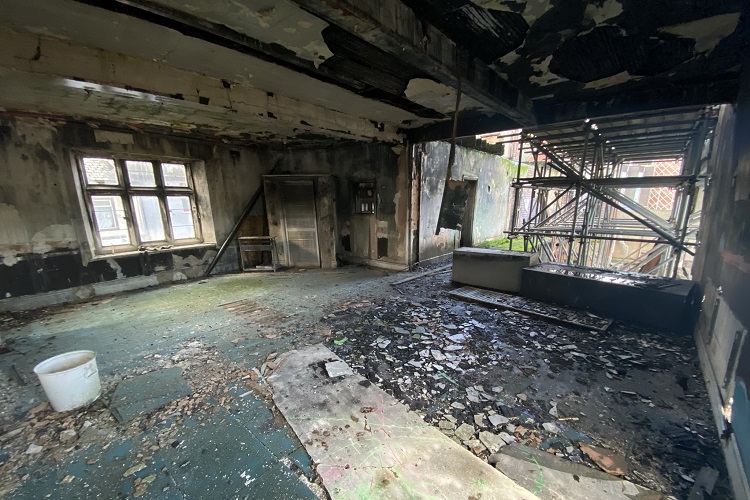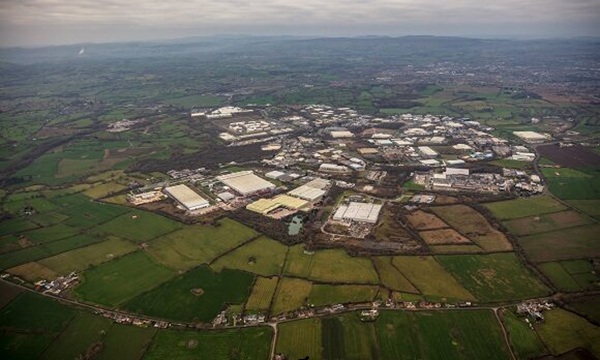The owner of Newport's iconic, fire-ravaged Drill Hall building says he is ‘excited' to submit a revised planning application to city planners for the Grade II listed property.
The move comes after planning permission was previously refused on the deteriorating building once the headquarters of the 3rd Monmouthshire Rifle Volunteer Corps among a array of other former uses including as a religious centre.
Now a revised scheme has been lodged with city planners in a bid to revitalise and refurbish the current shell of the burned out eyesore building.

The proposal aims to convert, refurbish and extend the former Lower Dock Street Drill Hall to create a mixed scheme of nine flats and first floor office/gym.
Howard Bowes, of Newport-Based Harvey Bowes Real Estate, who owns Newport's former Drill Hall said:
“We have been working tirelessly with Newport City Council planners to find a solution which we believe we have achieved with this latest planning application.”
Local man, Mr Bowes, said:
“Planning was previously declined for a proposal that was financially viable and which we believe brought the building back into good condition and useful purpose.
“My team, here in Newport, have been working tirelessly on a revised scheme for the Drill Hall which has cost many thousands of pounds so far and which, we envisage, will cost many more thousands by the time we are able to deliver on our scheme.”

The seasoned property investor and award winning property finance broker said
“We went back to the drawing board to create this exciting new scheme which we're hopeful will meet with approval of Newport city planners as we believe it is compliant with the feedback they gave us on the first round.
“Frankly we cannot wait and are excited to get the green light to make a start on restoring this wonderful, iconic and historic Drill Hall building and returning it to the prominence it deserves at the heart of the city of Newport.”
The Drill Hall, a distinctive, castle-style building, has stood on Lower Dock Street since being built in 1867.
The eye-catching, three-storey sandstone and bath stone main facade is flanked by castle turrets at each corner, ensuring the property has become an historic landmark building in the city of Newport.








